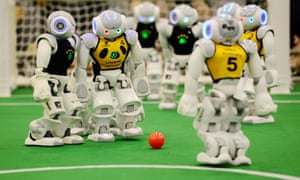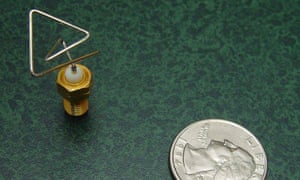Brewing you the perfect pint
AI might be shaking up life as we know it, but like any good party guest, it’s about bringing the beers. That’s according to the work of London-based company IntelligentX, which is using artificial intelligence to brew the perfect pint. What makes IntelligentX’s beers smart is the speed at which the firm is able to respond to the changing tastes of customers – on a batch-by-batch basis. The company currently brews four beers: golden, pale, amber and black.
On each bottle of AI beer there’s a code, directing customers towards its website, where they can offer their feedback by answering questions. Based on this feedback, a type of goal-driven AI called “reinforcement learning” works out what it needs to do to get better outcomes in the future, meaning changing the recipe to earn better scores from customers. It even has a bank of wild-card ingredients to draw on so the whole thing doesn’t become too predictable.
In the 12 months since IntelligentX’s four beers began to be trialled, the recipes involved have evolved 11 times. Right now, the beers are mainly being sampled at startup events in east London, but could soon be coming to a pub near you.

Writing the next blockbuster movie
From Stanley Kubrick’s 2001: A Space Odyssey to last year’s Ex Machina (with Steven Spielberg’s AI somewhere in between) there have been plenty of films about artificial intelligence. But what about AI actually writing the films themselves? A growing number of researchers and companies seem to think this is the way to go. A UK startup called Epagogix has advised some of the biggest studios in Hollywood, helping them predict how much money movies are likely to make at the box office. While that’s not exactly creative, the company goes further than that, having its neural network make creative suggestions about ways the movie’s potential yield could be increased.
Epagogix isn’t alone. Sunspring, a film made for this year’s Sci-Fi London film festival, used a neural network trained on screenplays such as Ghostbusters, Interstellar and The Fifth Element to generate a new script. It included the notable direction: “He is standing in the stars and sitting on the floor.” A similar project, carried out by a Scottish comic book artist Andy Herd, fed a neural net with every episode of the 1990s sitcom Friends and asked it to create new scripts. Herd later admitted said it would need further modification, after a disproportionate number of episodes ended with the cast in bed together.

Painting a masterpiece
In June last year, Google unveiled its Deep Dream project. Having at their digital fingertips the largest archive of photographs in human history, Google researchers decided to see what would happen if they let computers create rather than simply classify images. The idea is that, having seen enough examples of a chair to recognise and label one appropriately when shown it in a photo, Google’s computers should be able to create new chair pictures based on their sum total knowledge of “chair-ness”.
But Google found that, since pictures of barbells were frequently in the same photos as muscular weightlifters’ arms, Deep Dream assumed the limbs were part of them when it came to creating its own. Still, it would be hard to argue that the effects created by Deep Dream, which also looks for patterns within existing photos and uses this to kickstart its flights of AI fancy, aren’t memorable.
You can have a go yourself at seeing how AI will transform pictures of yourself, by using an app such as Dreamscope, which allows users to upload images and then apply different AI filters to them.

Being tomorrow’s sport stars
Despite the fact that many AI researchers veer closer to the “geek” than the “jock” end of the spectrum, that doesn’t mean that the important factors in what makes someone proficient at sport aren’t of interest to those in artificial intelligence. Topics such as co-ordination, agility and evaluation of the available legal moves in a constantly shifting game are at the core of AI and robotics research. This year, the so-called RoboCup tournament held its 20th competition in Leipzig, with teams of humanoid robots playing against one another in AI football matches. The eventual goal? By 2050, to have a team of such robots capable of beating a world-champion football team according to Fifa rules. It may sound crazy, but so did the idea of building a computer capable of beating chess champion Garry Kasparov once upon a time.
In the near future, if you want to get involved in AI-based sport, you could look up Cambridge-based company PiBorg, which is gearing up to host Formula Pi, the world’s first autonomous toy car race series. Open to anyone who wants to enter, the Formula 1-inspired contest gives participants a Raspberry Pi-powered vehicle and asks them to write the code to make it zoom around the track. There are also notes, seminars and basic code to get novices started. In short, AI and sport goes a lot further than just the new series of Robot Wars.

Designing the perfect satellite component
An evolutionary algorithm is a way of imitating the power of natural selection inside a computer, with AI attempting to solve problems by coming up with solutions and then pitting these solutions against others in a sort of knockout tournament. Increasingly, these tools are now used for design, such as the creation of components for Nasa satellites. “With a [satellite] antenna, for instance, you might tell the algorithm that you want a solution that will fit in a 10cm by 10cm box, be capable of radiating a spherical or hemispherical pattern and be able to operate at a certain Wi-Fi band,” says former Nasa and Google engineer Jason Lohn. “You provide all the constraints and, based on them, the algorithm then optimises a solution.”
Such solutions can even appear baffling to the smartest human engineers, such as when Lohn’s AI-designed satellite antenna came out looking like a bent paperclip. However, when he tried it, he found that it worked better than any solution he’d ever seen. “It works and, as engineers, what we ultimately care about is getting things to work.”
Other designers, such as the Italian Celestino Soddu, have used evolutionary algorithms for taking a stab at what a baroque cathedral would look like if it was a living thing allowed to evolve over many generations.

Cooking you a weird meal
Do you fancy substituting your regular Sunday lunch for an Indian turmeric paella, Turkish‑Korean caesar salad or Cuban lobster bouillabaisse? If these sound like recipes no human chef would ever come up with, you’d be right. They’re created by IBM’s supercomputer Watson, the bot perhaps best remembered for beating top-ranked human participants at the US TV gameshow Jeopardy! a few years ago.
“We started by getting Watson to analyse around 9,000 recipes,” says Rob High of IBM. “From that, the system was able to learn the different types and styles of recipe. It learned the difference between a salad and a sandwich or a quiche and a pasta dish. It also learned the difference between Vietnamese cooking and south-western [American] styles or French and Chinese cooking. It figured out which flavours come out most prominently within all those types of dishes.”
Watson can also analyse the chemical compounds that control taste and use these to generate novel pairings of food. Like any celebrity chef worth their salt, Watson even has its own recipe book: Cognitive Cooking with Chef Watson.

Writing a symphony
There is a scene in the 2004 movie I, Robot in which Will Smith’s character talks about computational creativity. “Can a robot write a symphony?” he asks, using it as an example of why machines and humans will always have fundamental differences. Had Smith’s character waited until July 2012, he would have got an answer, since that was when the London Symphony Orchestra took to the stage to perform an AI-generated composition entitled Transits – Into an Abyss, which was hailed as “artistic and delightful” by one reviewer.
In July this year, researchers at Plymouth University presented a 15-minute piece in which Welsh mezzo-soprano Juliette Pochin sang with a quantum computer. “The singer’s pitch and loudness and various notes by the composer are sent to two algorithms on the quantum computer every three seconds,” says creator Alexis Kirke. “Items returned include suggested harmonies. What this shows is that quantum AI isn’t just about super-speed algorithms for image recognition and molecular development, but also to provide creative opportunities for composers and artists.”
Thinking Machines by Luke Dormehl is published in paperback by WH Allen (£14.99). Click here to order a copy for £12.29

View all comments >